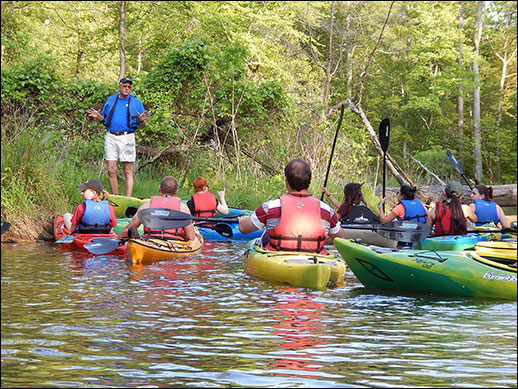|
December 2014 • Volume 13, Number 4

Photograph by Michael Allen
|
Daniel Strain
For Emily Fair, a science teacher at Francis Scott Key High School in Maryland, the Chesapeake Bay is an exciting educational tool. In her Science Research course, teenage students learn how to think and act like a scientist — all while raising fish, turtles, and a zoo of other organisms in dozens of tanks. This aquaculture setting gives the students real reasons to care about science. The class also provides them with scientific questions that they can explore through hands-on activities and research. It's the sort of program that education leaders in the state would like to see more of: learning opportunities that help Marylanders to better understand the workings of natural ecosystems. But large challenges remain in making sure that all students in the state get the chance to learn about the Bay. more . . .
|
Every summer, around 15 college students from schools across the country descend on the Chesapeake Bay to take part in Maryland Sea Grant's Research Experiences for Undergraduates program. These students spend twelve weeks living and working in the region, conducting research on blue crabs, water quality, and a host of other issues relevant to the estuary and its watershed. The program has expanded what we know about the Bay. Many experts in higher education also argue that opportunities to do hands-on research like this could be critical for training the next generation of marine scientists. more . . .
|
Small computers called Raspberry Pis are big enough to fit in the palm of your hand but have versatile uses. Now, a team of high school students from Maryland are using these devices to change how their classmates collect data and monitor conditions in school aquaculture labs. more . . .
|
Eric Buehl steps in as the new watershed restoration specialist for Maryland's mid and upper Eastern Shore. In his role with Maryland Sea Grant Extension, Buehl will help communities to improve their local water quality, benefitting people and the Chesapeake Bay. more . . .
|
|